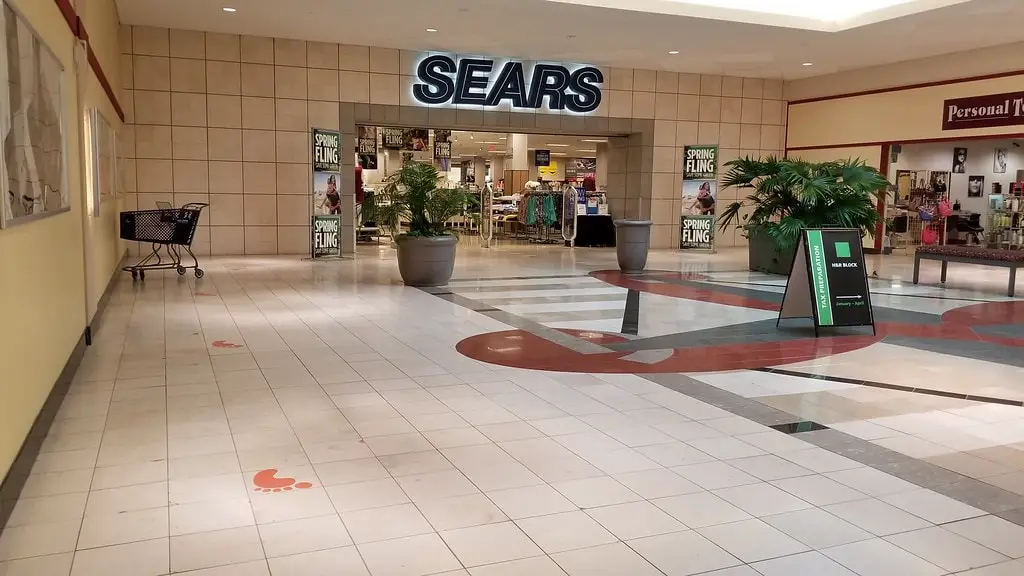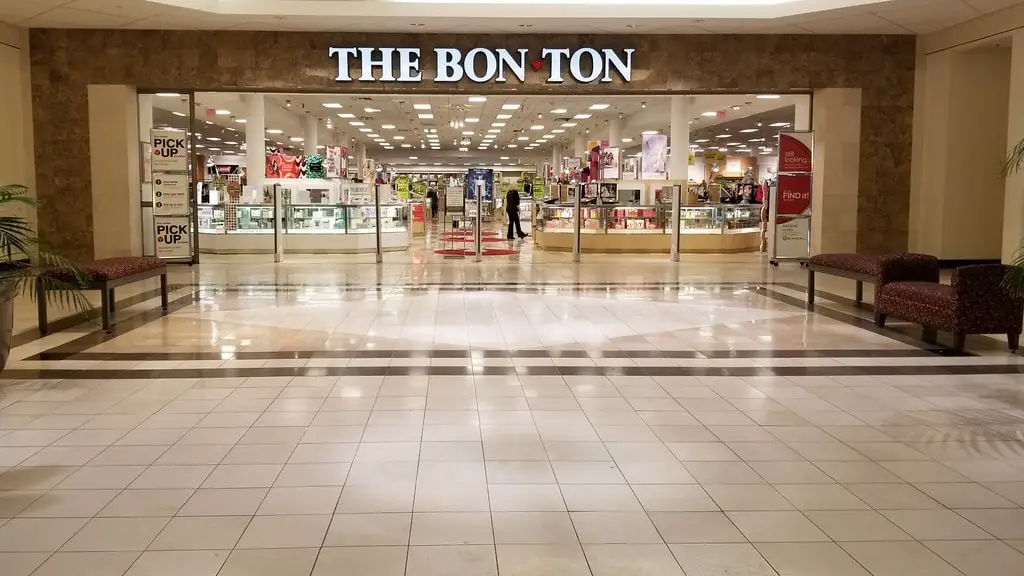The Birth and Development of Newburgh Mall
Newburgh Mall opened in 1980, a significant year marking a retail expansion in Newburgh, New York. Kravco, a notable property management firm, spearheaded the project, bringing retail innovation to the town.
The mall initially boasted a robust lineup of anchor stores, including Caldor and Howland’s, setting a precedent for regional shopping centers.
Throughout the 1980s and 1990s, Newburgh Mall thrived as a shopping hub. The original structure housed numerous national and local retailers, catering to a wide range of consumer needs.
The transition of anchor stores, from Caldor to Steinbach, then to Old Navy, reflects the mall’s adaptability to changing retail trends. However, Old Navy’s departure in 2011 marked a significant shift, leading to a gradual decrease in foot traffic.
The mall’s location, near the intersection of Interstate 87 and Interstate 84, initially served as a strategic advantage, attracting shoppers from across the Hudson Valley.
This accessibility contributed to its early success, making it a go-to destination for things to do in Newburgh, New York.
Despite these earlier achievements, the evolving retail landscape began to challenge the mall’s traditional format.
Subsequent chapters will delve into the economic hurdles and transformative efforts that have shaped Newburgh Mall’s journey to the present day.
Economic Challenges and Store Closures
The Newburgh Mall began facing significant economic challenges in the late 2000s. By 2009, more than a quarter of its spaces lay vacant, a stark contrast to its bustling beginnings.
High-profile exits, such as Bed Bath & Beyond, exacerbated the situation. Once a retail giant, the store closed its doors in the mall due to declining sales, mirroring its nationwide struggles.
In 2011, Old Navy relocated from the mall, reducing the foot traffic that smaller stores depended on.
This departure marked a critical loss, as Old Navy had been a significant draw for a younger demographic. The vacancy rate continued to climb, signaling a distressing trend for the mall’s future.
Foreclosure loomed in 2012, directly resulting from the declining occupancy and revenue.
The mall’s financial woes culminated in a foreclosure sale in 2014, where Wells Fargo, the mortgage holder, acquired the property for $10. This event underscored the severity of the economic challenges facing Newburgh Mall.

Ownership Changes and Foreclosure Aftermath
Following the foreclosure, Newburgh Mall saw a change in ownership that brought a glimmer of hope. 2017, the mall sold for $7.7 million, a transaction that hinted at potential revitalization.
The new owners faced the daunting task of reversing the mall’s fortunes, a challenge compounded by the evolving retail landscape and consumer preferences.
Once a major asset, the mall’s strategic location now required a reimagined approach to attract new tenants and shoppers.
The new management began exploring different strategies to rejuvenate the mall, including diversifying the tenant mix and enhancing the shopping experience.
Despite these efforts, the shadow of past economic difficulties lingered. The new owners had to navigate the complex dynamics of retail real estate, balancing the need for immediate improvements with long-term sustainability.
The community watched closely, hopeful yet cautious about the mall’s future under new stewardship.
An announcement on August 29, 2022, marked the end of an era for Newburgh Mall and the broader retail landscape in New York.
Sears, the last original anchor store of the mall, declared it would shut its doors in the fall of 2022, concluding a 43-year tenure.
This closure was significant for the mall and represented the departure of the last Sears department store in New York State.
A Facebook post shared the specific closing date, setting the final day of operation as Sunday, October 16, 2022.
This event underscored a pivotal moment in the shifting dynamics of traditional retail spaces and the end of a chapter in New York’s retail history.

The Introduction of Resorts World Hudson Valley Casino
In a bold move to revitalize Newburgh Mall, the Malaysian-based Genting Group announced the Resorts World Hudson Valley Casino, which will open in December 2022.
This new venture took over the space previously occupied by The Bon-Ton, transforming 60,000 square feet into a modern gaming destination.
The casino features over 1,200 slot machines, video lottery terminals, and 82 electronic table games, marking a significant shift in the mall’s consumer offering.
The introduction of the casino was part of a larger $50 million renovation project aimed at breathing new life into the aging mall.
This strategic move aimed to increase foot traffic and diversify the mall’s appeal beyond traditional retail.
The Genting Group also committed to a $3 million annual payment to the Town of Newburgh, which will enhance local police, fire, and ambulance services and further embed the casino into the community’s fabric.
The casino’s opening marked a new era for the mall, attracting visitors for shopping and entertainment.
This shift represented a significant pivot from the mall’s original retail-centric model, aligning with broader industry trends toward mixed-use developments.
The Vast Transformation: Plans for the Future
In late 2023, Newburgh Mall Ventures LLC unveiled plans for a “vast transformation” of the mall. The southeastern section will become a strip mall featuring individual storefronts for new national tenants.
This redevelopment aims to modernize the mall and adapt to changing retail landscapes. The first announced tenant, O’Reilly Auto Parts, is expected to open in early to mid-2024, taking over half of the former Sears location.
This transformation reflects a strategic shift towards diversification and modernization, moving away from the traditional enclosed mall format.
By introducing a variety of businesses and services, Newburgh Mall aims to become a more integrated part of the local community and offer a broader range of amenities and experiences.
The mall’s management has indicated that several leases are naturally expiring, allowing for this significant restructuring.
While this means some current businesses will close, the overall plan promises a rejuvenated space that could bring new energy and customers to the area.
Community and Business Reactions
The transformation of Newburgh Mall in Newburgh, New York, has elicited mixed reactions from the community and local businesses.
Studio 845, a dance studio within the mall, announced its closure in early 2024, citing forced eviction due to the upcoming renovations.
This news saddened many locals who viewed the studio as a valuable community asset. The closure highlights the challenges small businesses face when large-scale developments occur.

Residents have expressed various emotions, from excitement about the new developments to concern over losing familiar stores and services.
The introduction of the Resorts World Hudson Valley Casino in 2022 brought a new wave of visitors, changing the mall’s atmosphere and dynamics.
While some welcome the increased activity and unique entertainment options, others must catch up on the traditional shopping experience.
The mall’s transformation plans have sparked discussions about the future of retail and community spaces in Newburgh.
As leases expire and the landscape changes, there is a growing curiosity about which businesses will fill the new spaces and how they will meet community needs. The balance between progress and preservation remains a hot topic among Newburgh residents.
Looking Ahead: Newburgh Mall’s Prospective Future
As Newburgh Mall enters 2024, its future looks markedly different from its past. The planned strip mall conversion and the introduction of new tenants like O’Reilly Auto Parts signal a shift towards a more diversified and modern retail environment. These changes address the local population’s evolving shopping habits and preferences.
The success of these initiatives will depend on several factors, including the ability to attract a mix of retail, dining, and entertainment options that resonate with the community.
The mall’s management continues to seek additional food and beverage operators, particularly for the area adjacent to the casino, suggesting a strategic move towards creating a more comprehensive entertainment complex.
The community’s engagement and response will be crucial in shaping the mall’s future. As Newburgh Mall adapts to the changing retail landscape, it stands as a symbol of the broader challenges and opportunities facing suburban malls across America.
The coming years will reveal whether these transformations can reestablish the mall as a central hub of activity and commerce in Newburgh.
